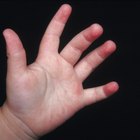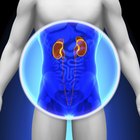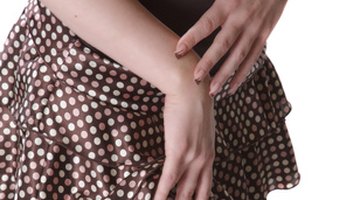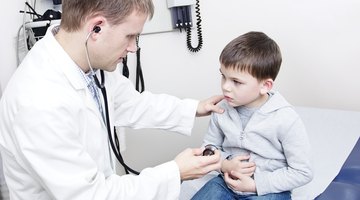Legs and Feet That Turn Purple in Toddlers
If the legs and feet of your toddler turn purple, contact your doctor. Skin color changes are typically indicative of a circulation problem. If the toddler is diagnosed with a heart or circulation disorder, medication is likely to be prescribed to prevent limited blood flow to the legs and feet. Lifestyle changes or surgeries could also be suggested by your pediatrician.
Features
Peripheral vascular disease is the general name given to describe problems that cause poor circulation in legs. An artery is blocked when you suffer from this condition, and the amount of blood flow is decreased to the extremities. Examples of diseases that affect your body’s circulatory system include rheumatic heart disease, Kawasaki disease, congenital heart defects and cardiomyopathy. Heart rate monitoring and X-ray technology are typically used to diagnose these types of disorders.
Complications

Hand Swelling in Children
Learn More
A complication of diabetes is peripheral vascular disease. If your child has been diagnosed with diabetes, you need to ask your doctor about how to manage this disease to prevent circulation problems. Diabetes management might include the use of insulin and dietary changes to control blood sugar levels.
Treatment
Poor circulation might be resolved by the control of glucose in the blood. Other treatment options to increase blood flow to the legs include a healthier calorie-controlled, low-cholesterol diet and more physical activity. Vascular surgeons might be consulted to correct narrow or blocked arterial passages.
Considerations

Causes for an Enlarged Kidney
Learn More
Circulation problems might not be the only cause of the color changes in the skin on your toddler’s legs and feet. Gangrene commonly affects extremities and results from a lack of blood flow or a bacterial infection. Besides purple, red, blue or black skin discoloration, the toddler feels severe pain, then numbness. Gangrene requires immediate attention and might involve the removal of dead tissue and antibiotic therapy to cure bacterial infections causing the disease.











